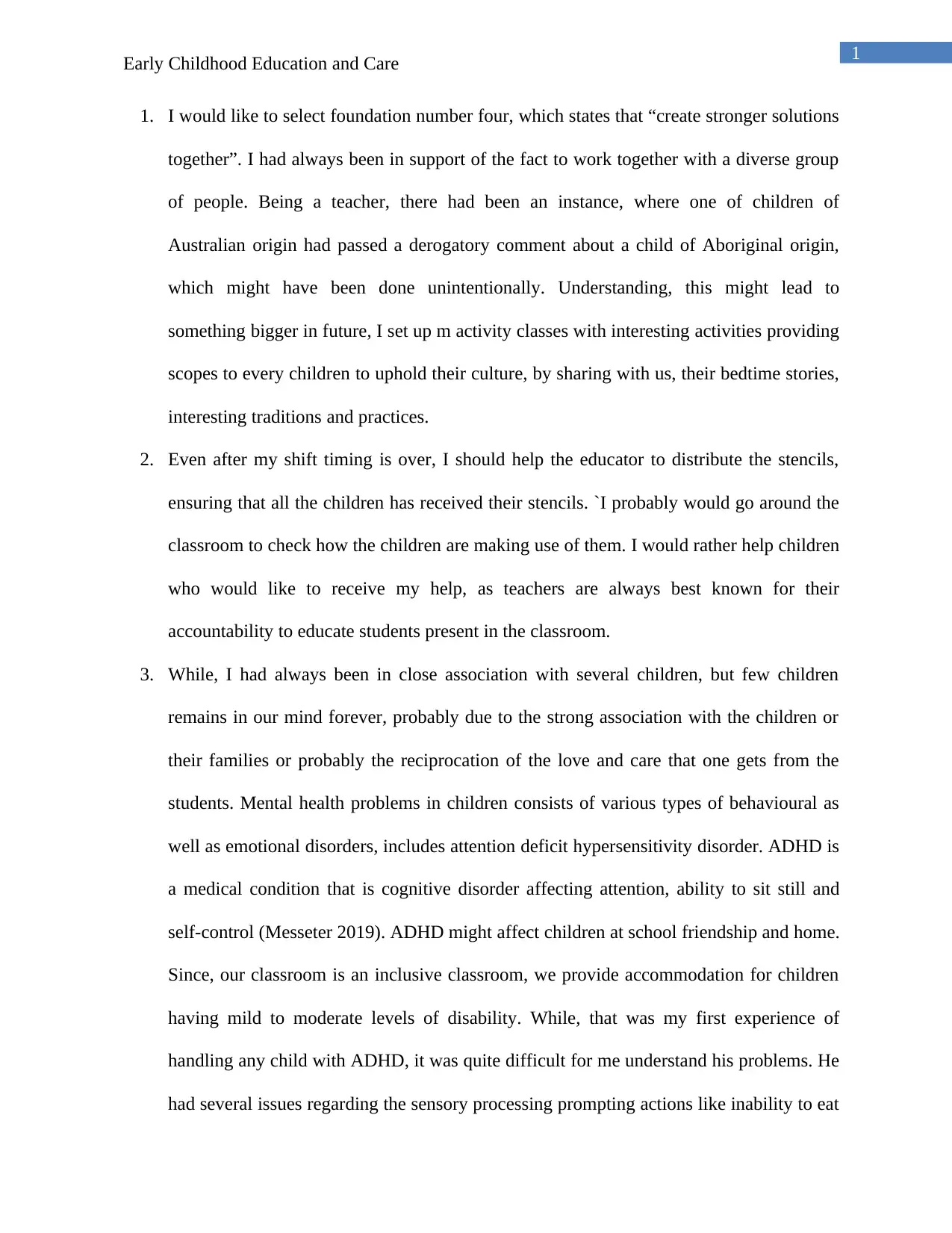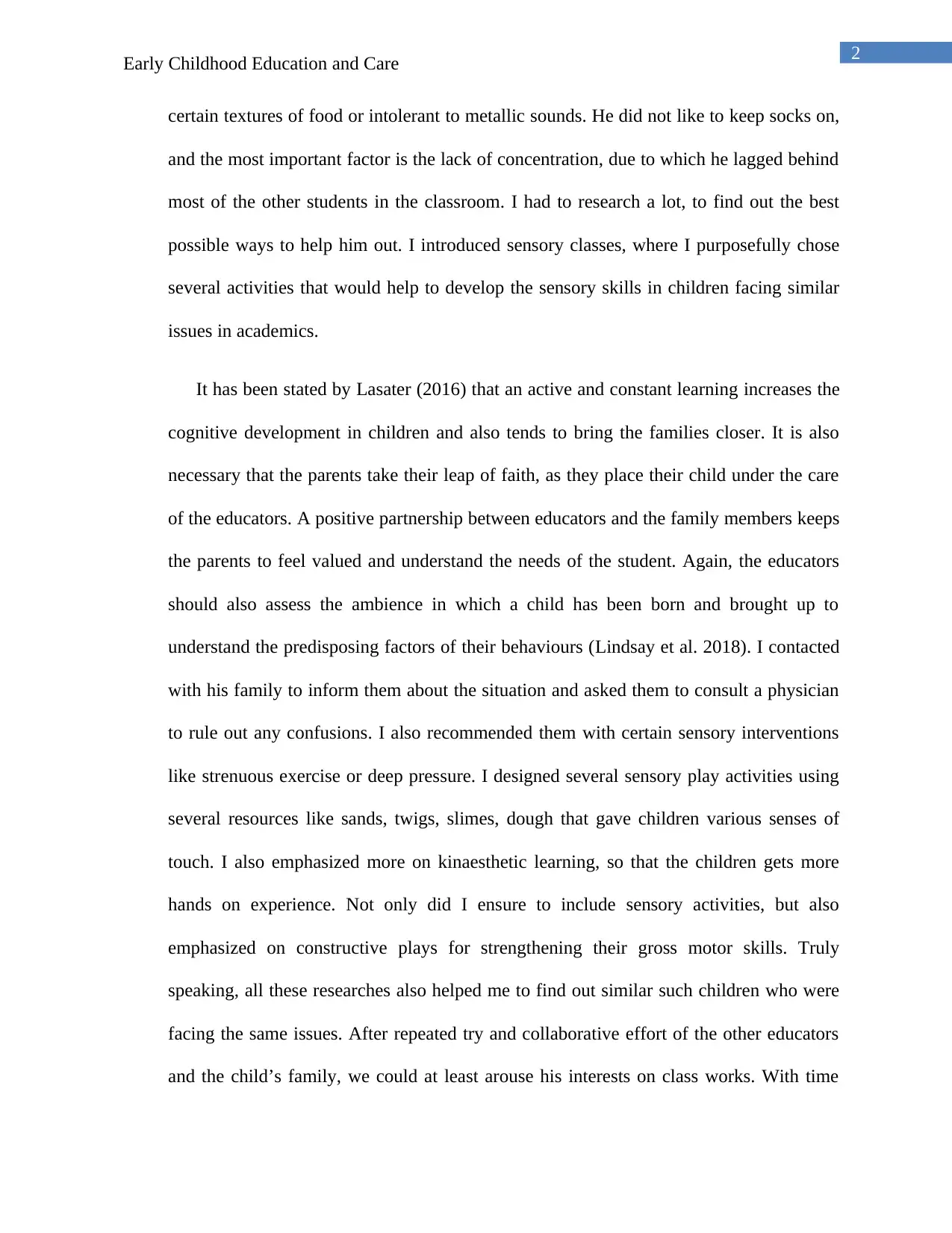Early Childhood Education and Care: Goodstart Foundations Report
VerifiedAdded on 2022/09/23
|5
|1067
|25
Report
AI Summary
This report addresses an Early Childhood Education and Care assignment centered on Goodstart Foundations, focusing on practical applications and real-world scenarios. The student selects the foundation of "create stronger solutions together," providing an example of fostering inclusivity and cultural understanding within the classroom. The report further explores a scenario involving an educator providing unauthorized activities, detailing the steps to address the situation. A significant portion of the report describes a close relationship with a child diagnosed with ADHD, outlining the educator's approach to support the child's needs, including sensory activities, family collaboration, and inclusive classroom strategies. The student reflects on the development of classroom management skills, curriculum design, and instructional design to support diverse learners. The report also references relevant literature to support the practices and strategies discussed, emphasizing the importance of educator-family partnerships and the impact of educators' actions on children's outcomes.
1 out of 5











![[object Object]](/_next/static/media/star-bottom.7253800d.svg)